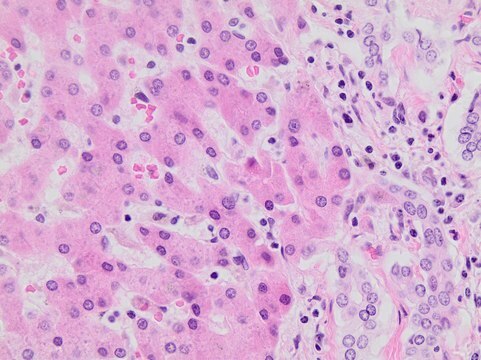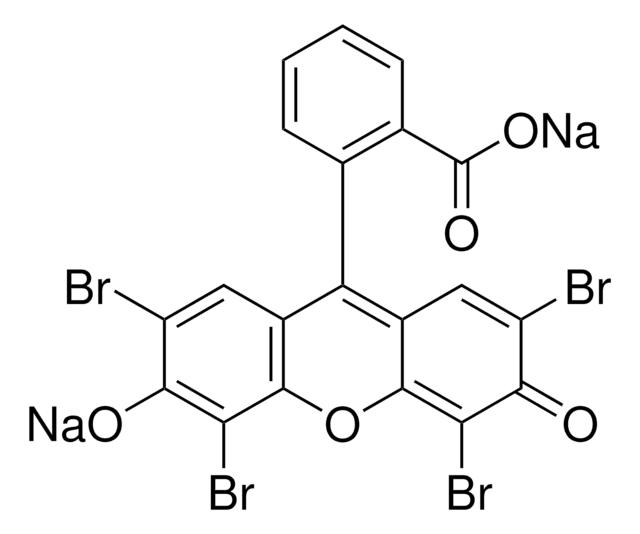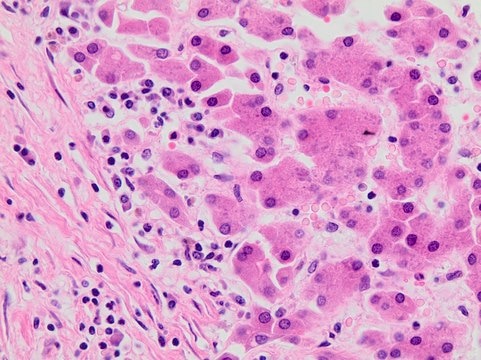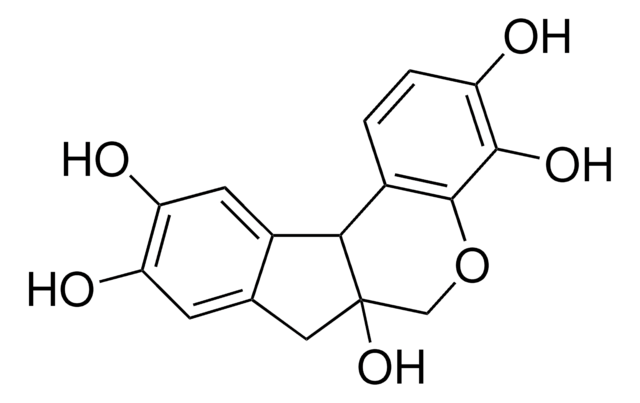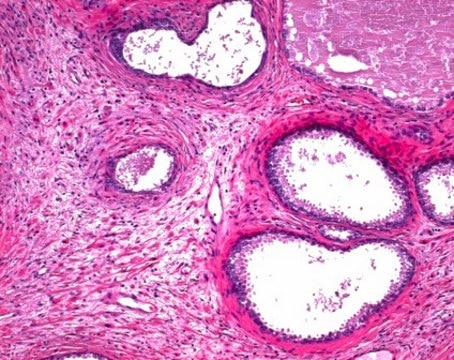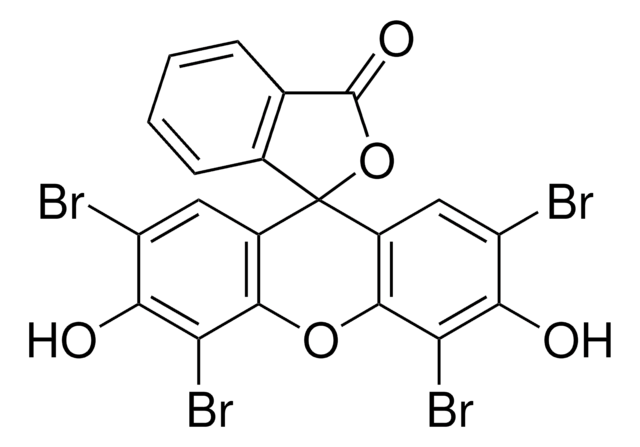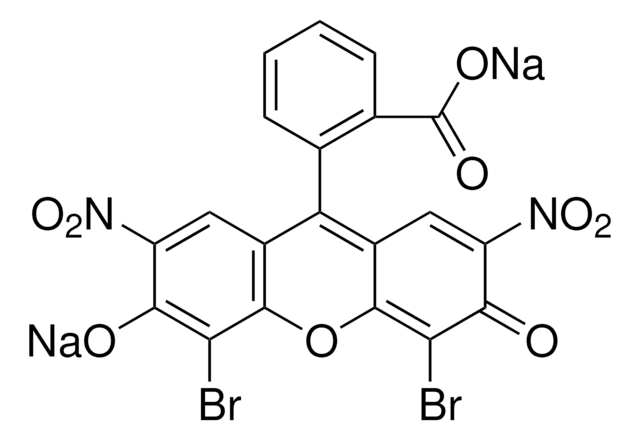Recommended Products
form
solution
Quality Level
shelf life
Expiry date on the label.
IVD
for in vitro diagnostic use
concentration
0.5 % (w/v) in water
application(s)
hematology
histology
storage temp.
room temp
Looking for similar products? Visit Product Comparison Guide
Related Categories
Application
General purpose cytoplasmic counterstain. Used with hematoxylin and eosin staining.
Other Notes
Certified Eosin Y, 0.5% (w/v) in water. Not acidified.
wgk_germany
WGK 2
flash_point_f
Not applicable
flash_point_c
Not applicable
ppe
Eyeshields, Gloves, multi-purpose combination respirator cartridge (US)
Certificates of Analysis (COA)
Search for Certificates of Analysis (COA) by entering the products Lot/Batch Number. Lot and Batch Numbers can be found on a product’s label following the words ‘Lot’ or ‘Batch’.
Already Own This Product?
Find documentation for the products that you have recently purchased in the Document Library.
Customers Also Viewed
Oliver Hachmöller et al.
Journal of trace elements in medicine and biology : organ of the Society for Minerals and Trace Elements (GMS), 44, 71-75 (2017-10-03)
The influence of rhodanine and haematoxylin and eosin (HE) staining on the copper distribution and concentration in liver needle biopsy samples originating from patients with Wilson's disease (WD), a rare autosomal recessive inherited disorder of the copper metabolism, is investigated.
Wei-Ting Chen et al.
Cell, 182(4), 976-991 (2020-07-24)
Although complex inflammatory-like alterations are observed around the amyloid plaques of Alzheimer's disease (AD), little is known about the molecular changes and cellular interactions that characterize this response. We investigate here, in an AD mouse model, the transcriptional changes occurring
Ivana Dinulovic et al.
Skeletal muscle, 6, 38-38 (2016-11-12)
Skeletal muscle tissue has an enormous regenerative capacity that is instrumental for a successful defense against muscle injury and wasting. The peroxisome proliferator-activated receptor γ coactivator 1α (PGC-1α) exerts therapeutic effects in several muscle pathologies, but its role in damage-induced
Marshall W Hogarth et al.
Nature communications, 8, 14143-14143 (2017-02-01)
Duchenne muscular dystrophy (DMD) is characterized by muscle degeneration and progressive weakness. There is considerable inter-patient variability in disease onset and progression, which can confound the results of clinical trials. Here we show that a common null polymorphism (R577X) in
Federica Francescangeli et al.
Journal of experimental & clinical cancer research : CR, 39(1), 2-2 (2020-01-09)
Quiescent/slow cycling cells have been identified in several tumors and correlated with therapy resistance. However, the features of chemoresistant populations and the molecular factors linking quiescence to chemoresistance are largely unknown. A population of chemoresistant quiescent/slow cycling cells was isolated
Our team of scientists has experience in all areas of research including Life Science, Material Science, Chemical Synthesis, Chromatography, Analytical and many others.
Contact Technical Service